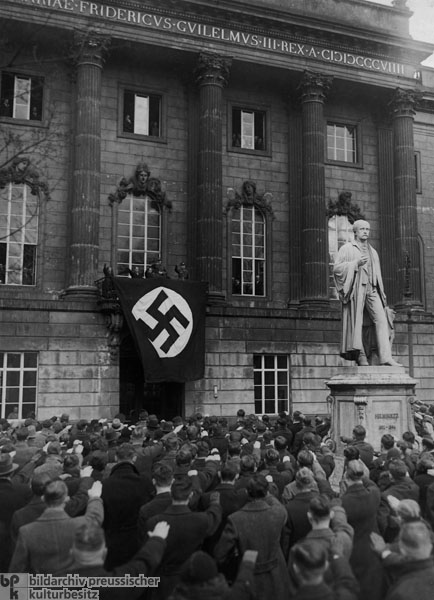|
Reich Leader of the German Student Body [Deutsche Studentenschaft] Andreas Feickert on the Balcony of Berlin University (January 1935)
The National Socialist regime also staked totalitarian claims to power in the fields of science and research and sought to replace international "Jewish-liberal" learning with a "type of knowledge cultivation that was connected to the people" [volksverbundene Wissenschaftspflege]. The most effective step taken in the direction of this vaguely formulated objective was the “coordination” [Gleichschaltung] of the faculty/staff and structure of universities and research institutes. After the "Law for the Restoration of a Professional Civil Service" was decreed on April 7, 1933, about 20 percent of university employees were dismissed on racial or political grounds. The majority of the remaining academics made arrangements with the regime. About two-thirds of them ultimately joined the NSDAP. Furthermore, universities were increasingly stripped of their traditional ability to engage in academic self-administration. Starting in 1935, rectors, in their role as "leaders of universities," were put under the direct supervision of the Reich Ministry for Science, Education, and Popular Instruction headed by Bernhard Rust. Rust was also responsible for appointing the leader of the National Socialist German Students' League [Nationalsozialistischer Deutscher Studentenbund or NSDStB], the student branch of the NSDAP. From 1931 on, this organization dominated the German Student Body [Deutsche Studentenbund or DSt], the umbrella organization for student committees; it also advanced political and ideological education and controlled the student body in a way that furthered National Socialist goals. In this photograph, the Reich Leader of the German Student Body, Andreas Feickert, makes a public appeal at Berlin University on the occasion of the Saarland referendum.

|


